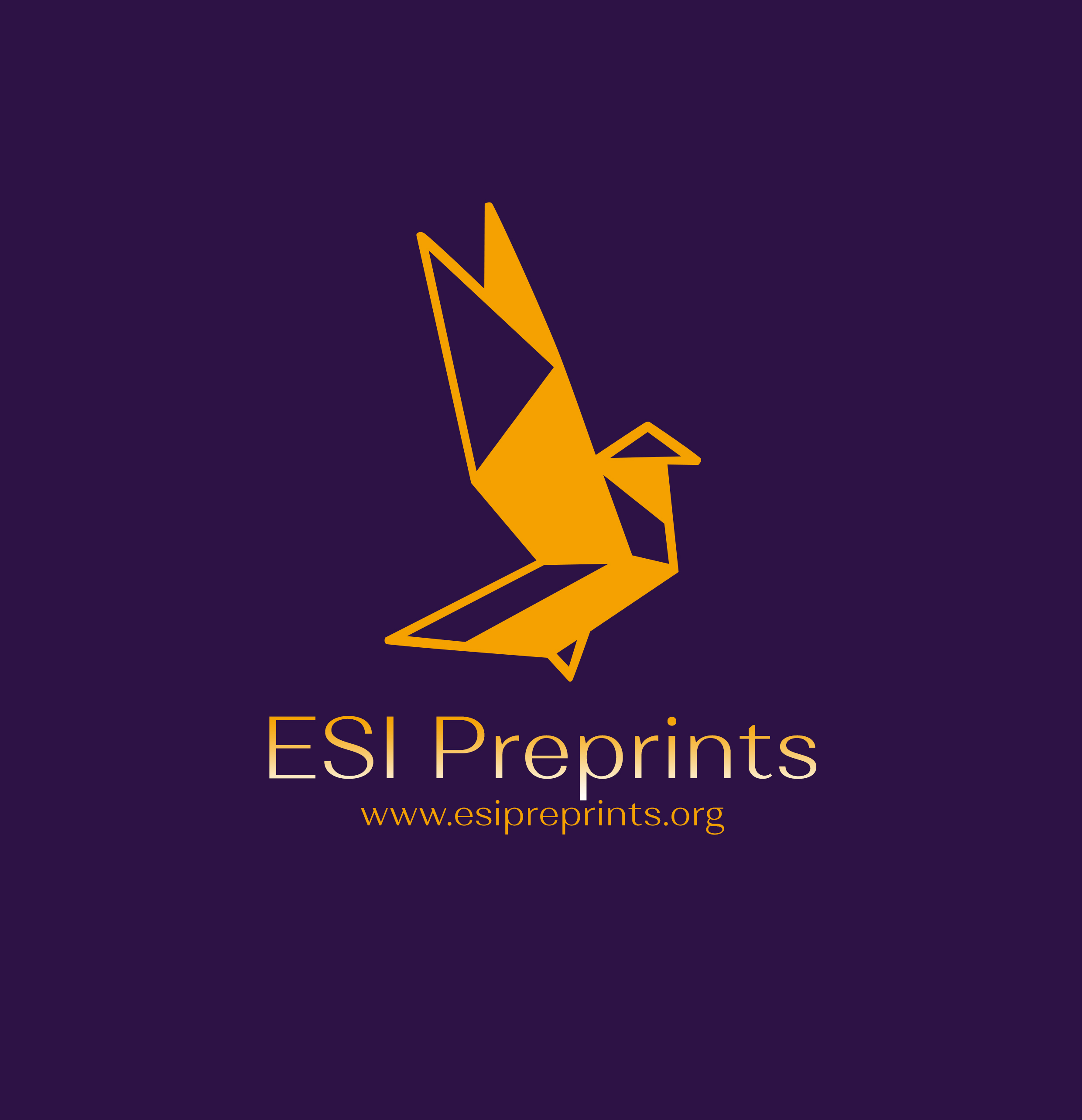Enquête Ethnobotanique Sur les Usages de Euphorbia heterophylla L. (Euphorbiaceae) Dans le Nord de la Côte d’Ivoire
Abstract
Euphorbia heterophylla est une herbe envahissante dans la Région nord de la Côte d’Ivoire. Elle est connue par les éleveurs, les agriculteurs et les herboristes. Le but de ce travail est d’identifier les différents usages de cette plante. A cet effet, une enquête ethnobotanique basée sur la méthode d'échantillonnage stratifiée probabiliste a été menée dans la région du Poro, la Bagoué et du Tchologo. En élevage, Euphorbia heterophylla est utilisée comme fourrage pour le lapin (46,5%), le cobaye (34,9%) et le porc (18,6%). Chez les Hommes, elle est utilisée pour la production de lait maternel chez la femme (28,6%), le traitement des plaies (25,7%), les infections gastriques (25,70%), l’amélioration de la qualité du sperme (11,4%) le traitement des rougeurs des bébés (8,6%). Ces résultats pourraient constitués une source d’informations non négligeables pour les recherches scientifiques sur Euphorbia heterophylla.
Euphorbia heterophylla is an invasive plant in the northern region of Côte d'Ivoire. It is known by breeders, farmers and herbalists. The aim of this work is to identify the different uses of this plant. To this end, an ethnobotanical survey based on the stratified probability sampling method was conducted in the Poro, Bagoué and Tchologo regions. In breeding, Euphorbia heterophylla is used as fodder for rabbits (46.5%), guinea pigs (34.9%) and pigs (18.6%). In men, it is used for the production of breast milk in women (28.6%), the treatment of wounds (25.7%), gastric infections (25.70%), the improvement of the quality semen (11.4%) the treatment of rashes in babies (8.6%). These results could constitute a significant source of information for scientific research on Euphorbia heterophylla.
Downloads
Metrics
References
2. Ajuru, M. G., Williams, L. F., Ajuru, G., Harcourt, P., Pathology, C., Harcourt, P., & Harcourt, P. (2017). Qualitative and Quantitative Phytochemical Screening of Some Plants Used in Ethnomedicine in the Niger Delta Region of Nigeria Email address : 5(5), 198–205. https://doi.org/10.11648/j.jfns.20170505.16
3. Akouedegni, C. G., Tossa, I. G., Daga, F. D., & Koudandé, D. O. M. S. (2012). Synthèse des connaissances sur les plantes galactogènes et leurs usages en République du Bénin Benin. Brab, 24–35.
4. Benkhnigue, O., Zidane, L., Fadli, M., Elyacoubi, H., Rochdi, A., & Douira, A. (2011). Etude ethnobotanique des plantes médicinales dans la région de Mechraâ Bel Ksiri (Région du Gharb du Maroc). Acta Botanica Barcinonensia, 53, 191–216. http://raco.test.cesca.cat/index.php/ActaBotanica/article/view/252920
5. Dingui, J. A., Brou, C. Y., David, N., & Zirihi, N. G. (2021). Etude ethnobotanique sur Euphorbia heterophylla en Côte d ’ Ivoire Ethnobotanical study on Euphorbia heterophylla in Côte d ’ Ivoire. 15(December), 2500–2513.
6. Etuk, E. U., & Muhammad, A. A. (2009). Fertility enhancing effects of aqueous stem bark extract of Lophira lanceolata in male Spargue dawley rats. International Journal of Plant Physiology and Biochemistry, 1(1), 1–004. http://www.academicjournals.org/IJPPB
7. Honoré, T. B. I., Koffi, N., Lezin, B. E., Rachel, A. R., & Séverin, A. (2016). Etude Ethnobotanique De Quelques Espèces Du Genre Corchorus Rencontrées En Côte d’Ivoire. European Scientific Journal, ESJ, 12(24), 415. https://doi.org/10.19044/esj.2016.v12n24p415
8. Houéhanou, D. T., Assogbadjo, A. E., Chadare, F. J., Zanvo, S., & Sinsin, B. (2015). Approches méthodologiques synthétisées des études d’ethnobotanique quantitative en milieu tropical. January, 18.
9. INS. (2015). Recensement Général de la Population et de l’Habitat de 2014.
10. Ipoou, I., Adou, L. M. D., Touré, A., & Marnotte, P. (2011). Aspects de la dynamique d ’ enherbement des parcelles par Euphorbia heterophylla L . ( Euphorbiaceae ) : production de graine et évolution du stock de semences. 3144–3152.
11. Isidore, S. A., Djeneb, C., Kouadio, B., & Noël, G. (2018). Enquête ethnobotanique sur les Euphorbiaceae médicinales utilisées chez les Baoulé du District de Yamoussoukro ( Côte d ’ Ivoire ). 34, 12734–12748.
12. Johnson, D. E. (1997). Les adventices en riziculture en afrique de l’ouest. 312. https://www.riceadvice.info/documents/30/24._Weeds_of_Rice_in_West_Africa.pdf
13. Mathurin, K. K., Tagouèlbè, T., Koné, G. A., Assidjo, N. E., Marnet, P. G., & Kouba, M. (2021). Desmodium tortuosum, Euphorbia heterophylla and Moringa oleifera Effect on Local Rabbit Does Milk Production and Pups’ Performances. Journal of Agricultural Science, 13(4), 93. https://doi.org/10.5539/jas.v13n4p93
14. MI.R.A.H. (2014). Plan stratégique de développement de l’élevage, de la pêche et de l’aquaculture en Côte d’Ivoire (PSDEPA 2014-2020). Tome I : Diagnostic – Stratégie de développement – Orientations. 76–179. https://www.riceadvice.info/documents/30/24._Weeds_of_Rice_in_West_Africa.pdf
15. N’Goran, D. V. K., Eric, T., Yapo, M. Y., & Emmanuel, N. A. (2012). Effet de Panicum maximum associé à Euphorbia heterophylla (L.) sur la productivité des femelles primipares durant le cycle de reproduction chez le cobaye ( Cavia porcellus L .). Tropicultura, 30(1), 24–30.
16. N’Goran, D. V. K., Seydou, B. M., Cho, E. M. A., Yélèhi, D. A., Emmanuel, N. A., & Maryline, K. (2019). Viande de lapin ( Oryctolagus cuniculus L .) enrichie en oméga 3 avec un aliment contenant de l ’ euphorbe ( Euphorbia heterophylla L .). October. https://doi.org/10.19182/remvt.31779
17. OCHA. (2013). COTE D’IVOIRE: DISTRICT DES SAVANES_Carte de référence. 2013. https://reliefweb.int/map/côte-divoire/côte-divoire-district-des-savanes-carte-de-référence-version-mars-2013
18. Okeniyi SO, B. J, A., & S, G. (2012). Phytochemical Screening, Cytotoxicity, Antioxidant and Antimicrobial Activities of Stem and Leave Extracts of Euphorbia Heterophylla. Journal of Biology and Life Science, 4(1), 87–91. https://doi.org/10.5296/jbls.v4i1.2047
19. Pascal Tillie, Kamel Louhichi, et S. G.-Y.-P. (2018). La culture attelée dans le bassin cotonnier en Côte d ’ Ivoire. https://doi.org/10.2760/505527
20. Rukundo Roger. (2007). Contribution à l’étudede l’activité androgénique de Nauclea latifolia S. ( Rubiaceæ). 129.
21. Schmelzer, G. H., & Gurib-Fakim, A. (2008). Ressources végétales de l’Afrique tropicale 11 (1): Plantes médicinales. Journal of Medicinal Plants Research, 11(1), 869. http://www.worldagroforestry.org/sites/treedbs/treedatabases.asp
Copyright (c) 2023 Kouame Yao Francois, Kanga Yao, Koukaou N’Goran David Vincent

This work is licensed under a Creative Commons Attribution-NonCommercial-NoDerivatives 4.0 International License.








